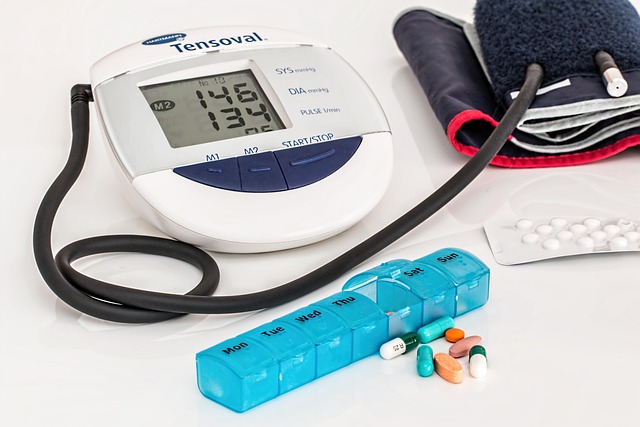Mobile Stair Lifts Without Installation: Safe, Simple, and Ready to Use
For many people with limited mobility, stairs can be a daily challenge. Whether due to age, injury, or a health condition, navigating up and down steps isn’t always safe — or even possible. That’s where mobile stair lifts without installation come in.

Mobility challenges should never limit your ability to move freely within your own home. Mobile stair lifts have emerged as a flexible alternative to traditional fixed stairlifts, offering users the freedom to maintain independence without committing to permanent home modifications. These devices are particularly valuable for those with temporary mobility issues, renters, or anyone seeking a cost-effective accessibility solution.
Unlike conventional stairlifts that require professional installation and structural alterations, mobile stair lifts can be positioned and used immediately. They provide a bridge between full mobility and the need for assistance, allowing users to retain dignity and autonomy in their daily routines.
What Is a Mobile Stair Lift?
A mobile stair lift is a portable assistive device designed to help individuals with limited mobility navigate staircases safely. Unlike permanently installed stairlifts that are fixed to walls or railings, mobile versions are freestanding units that can be moved, stored, or transported as needed. These devices typically feature a seat or platform mounted on a motorized track system that operates independently of the staircase structure.
Mobile stair lifts come in various configurations, including battery-powered models and those requiring minimal setup. They are engineered to accommodate different staircase widths and angles, though they work best on straight staircases. The key distinction from traditional stairlifts is their portability and the absence of permanent installation requirements, making them ideal for temporary use or situations where structural modifications are not feasible.
How Does a Mobile Stair Lift Work?
Mobile stair lifts operate through a combination of motorized mechanisms and safety features designed to provide smooth, controlled movement up and down stairs. Most models use rechargeable battery systems that power electric motors, eliminating the need for hardwired electrical connections. The user sits on a secure seat or stands on a platform, depending on the model, and controls the movement using simple buttons or joystick controls.
The device typically employs a track or rail system that the lift travels along, with wheels or rollers ensuring stable movement. Advanced models incorporate sensors that detect obstacles and automatically stop if resistance is encountered. Weight distribution systems and braking mechanisms work together to maintain balance and prevent sudden movements. Some mobile stair lifts feature adjustable components to accommodate different staircase dimensions, while others are designed for specific configurations.
The setup process is straightforward, often requiring only positioning the device at the base or top of the stairs and ensuring it is stable before use. No drilling, wiring, or permanent modifications are necessary, which preserves the integrity of the property and allows for easy removal when no longer needed.
What Are the Key Benefits of Mobile Stair Lifts?
Mobile stair lifts offer numerous advantages that make them appealing to a wide range of users. The most significant benefit is the elimination of installation requirements, which translates to immediate usability and lower upfront costs compared to permanent stairlifts. This portability also means the device can be moved between locations or taken along during relocations, providing consistent accessibility wherever needed.
For renters or those living in temporary accommodation, mobile stair lifts present an ideal solution since they do not require landlord approval for structural changes. They also serve well for individuals recovering from surgery or injury who need short-term assistance but do not want to invest in permanent equipment. The flexibility to remove the device when not in use helps maintain the aesthetic appearance of the home and prevents the staircase from feeling cluttered.
Additionally, mobile stair lifts typically require less maintenance than fixed installations, as they have fewer integrated components and no complex wiring systems. Many models fold or disassemble for compact storage, making them practical for homes with limited space. The independence they provide cannot be overstated, allowing users to move between floors without relying on family members or caregivers for assistance.
Who Should Consider Using a Mobile Stair Lift?
Mobile stair lifts are suitable for a diverse group of individuals facing various mobility challenges. Elderly people experiencing age-related mobility decline, such as arthritis, joint pain, or general weakness, can benefit greatly from the support these devices provide. Individuals recovering from hip or knee surgery, fractures, or other temporary injuries find mobile stair lifts invaluable during their rehabilitation period.
People with chronic conditions affecting balance or strength, including multiple sclerosis, Parkinson’s disease, or cardiac issues, may use mobile stair lifts to reduce fall risks and conserve energy. Caregivers supporting family members with mobility limitations also find these devices helpful in reducing the physical strain of assisting someone up and down stairs.
Renters who cannot make permanent modifications to their properties represent another key user group, as do homeowners who are uncertain about committing to fixed installations. Families with visiting relatives who have mobility challenges may also consider investing in a mobile stair lift to ensure comfortable, safe access throughout the home during visits.
What Safety Features Should You Look For?
When evaluating mobile stair lifts, prioritizing safety features is essential to ensure reliable, secure operation. Look for models equipped with automatic braking systems that engage immediately if the device encounters resistance or if the user releases the controls. Seat belts or safety harnesses are critical for preventing falls during transit, particularly for users with balance issues.
Non-slip surfaces on seats and platforms provide additional security, while sturdy armrests and footrests help users maintain proper positioning throughout the journey. Battery backup systems ensure the device can complete its cycle even during power interruptions, preventing users from becoming stranded mid-staircase. Overload sensors that prevent operation when weight limits are exceeded protect both the user and the equipment.
Obstacle detection technology uses sensors to identify objects in the path and automatically stops the lift, reducing collision risks. Smooth start and stop mechanisms prevent jarring movements that could destabilize users. Emergency stop buttons should be easily accessible and clearly marked, allowing immediate cessation of movement if needed. Finally, stability indicators or locking mechanisms that confirm the device is properly positioned before use add an extra layer of protection.
Regular maintenance checks, even for portable devices, help ensure all safety features remain functional. Always consult the manufacturer’s guidelines regarding weight limits, proper usage, and maintenance schedules to maximize safety and longevity.
Conclusion
Mobile stair lifts represent a practical, flexible solution for individuals seeking to maintain independence and safely navigate stairs without permanent home modifications. Their portability, ease of use, and comprehensive safety features make them suitable for a wide range of users, from those with temporary mobility challenges to renters requiring accessible solutions. By understanding how these devices work and what features to prioritize, you can make an informed decision that enhances quality of life while preserving both safety and autonomy. Whether for short-term recovery or ongoing support, mobile stair lifts offer a dignified path to continued independence within your home.




